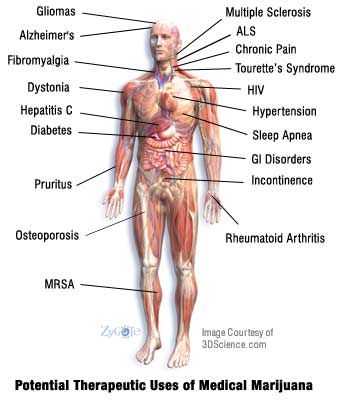Editor's Note: There is a groundswell of attention in the news to marijuana's role in causing and preventing various types of cancers. Last week, AlterNet published an article from the Marijuana Policy Project about a new study finding that pot smokers have a lower risk of head and neck cancers than people who don’t smoke pot. Earlier this year, the corporate media pounced on a study suggesting that men who had been using marijuana at least once per week and who had started smoking pot prior to age 18 had an elevated risk of testicular cancer known as nonseminoma, which makes up fewer than half of one percent of all cancer cases among men.
Head, neck and testicular cancers are of course quite serious ailments to deal with, but what about cancer of the most obvious organ at risk with pot smoking, the lungs? Where's the science on that? The article below by Fred Gardner, editor of the medical marijuana research quarterly journal O'Shaughnessy's, shares the results of a major medical study the media completely ignored, and his conclusions are quite blunt on the matter: Smoking pot doesn't cause lung cancer. In fact, the study found that cigarette smokers who also smoked marijuana were at a lower risk of contracting lung cancer than tobacco-only smokers.

Smoking Marijuana Does Not Cause Lung Cancer
by Fred Gardner
One in three Americans will be afflicted with cancer, we are told by the government (as if it’s our immutable fate and somehow acceptable). Cancer is the second-leading cause of death in the U.S. and lung cancer the leading killer among cancers.
You’d think it would have been very big news in June 2005 when UCLA medical school professor Donald Tashkin reported that components of marijuana smoke -- although they damage cells in respiratory tissue -- somehow prevent them from becoming malignant. In other words, something in marijuana exerts an anti-cancer effect!
Tashkin has special credibility. He was the lead investigator on studies dating back to the 1970s that identified the components in marijuana smoke that are toxic. It was Tashkin et al. who published photomicrographs showing that marijuana smoke damages cells lining the upper airways. It was the Tashkin lab’s finding that benzpyrene -- a component of tobacco smoke that plays a role in most lung cancers -- is especially prevalent in marijuana smoke. It was Tashkin’s data showing that marijuana smokers are more likely than non-smokers to cough, wheeze, and produce sputum.
Tashkin reviewed his findings in April 2008, at a conference organized by “Patients Out of Time,” a reform group devoted to educating doctors and the public (as opposed to lobbying politicians). Some 30 MDs and nurses got continuing medical education credits for attending the event, which was held at Asilomar, on the Monterey Peninsula.
The National Institute on Drug Abuse, which supported Tashkin’s marijuana-related research over the decades, readily gave him a grant in 2002 to conduct a large, population-based, case-controlled study that would prove definitively that heavy, long-term marijuana use increases the risk of lung and upper-airways cancers.
What Tashkin and his colleagues found, however, disproved their hypothesis. (Tashkin is to marijuana as a cause of lung cancer what Hans Blix was to Iraq’s weapons of mass destruction -- an honest investigator who set out to find something, concluded that it wasn’t there, and reported his results.)
Tashkin’s team interviewed 1,212 cancer patients from the Los Angeles County Cancer Surveillance program, matched for age, gender, and neighborhood with 1,040 cancer-free controls. Marijuana use was measured in “joint years” (number of years smoked times number of joints per day).
It turned out that increased marijuana use did not result in higher rates of lung and pharyngeal cancer, whereas tobacco smokers were at greater risk the more they smoked. Tobacco smokers who also smoked marijuana were at slightly lower risk of getting lung cancer than tobacco-only smokers.
These findings were not deemed worthy of publication in “NIDA Notes.” Tashkin reported them at the 2005 meeting of the International Cannabinoid Research Society. They were published in the October 2006 issue of Cancer Epidemiology Biomarkers & Prevention.
Without a press release from NIDA calling attention to its significance, the assignment editors of America had no idea that “Marijuana Use and the Risk of Lung and Upper Aerodigestive Tract Cancers: Results of a Population-Based Case-Control Study” by Mia Hashibe1, Hal Morgenstern, Yan Cui, Donald P. Tashkin, Zuo-Feng Zhang, Wendy Cozen, Thomas M. Mack and Sander Greenland was a blockbuster story.
I suggested to Eric Bailey of the L.A. Times that he write up Tashkin’s findings -- UCLA provided the local angle if the anti-cancer effect wasn’t enough. Bailey said his editors wouldn’t be interested for some time because he had just filed a marijuana-related piece. The Tashkin scoop is still there for the taking!
TO BE CONTINUED ... LINK HERE